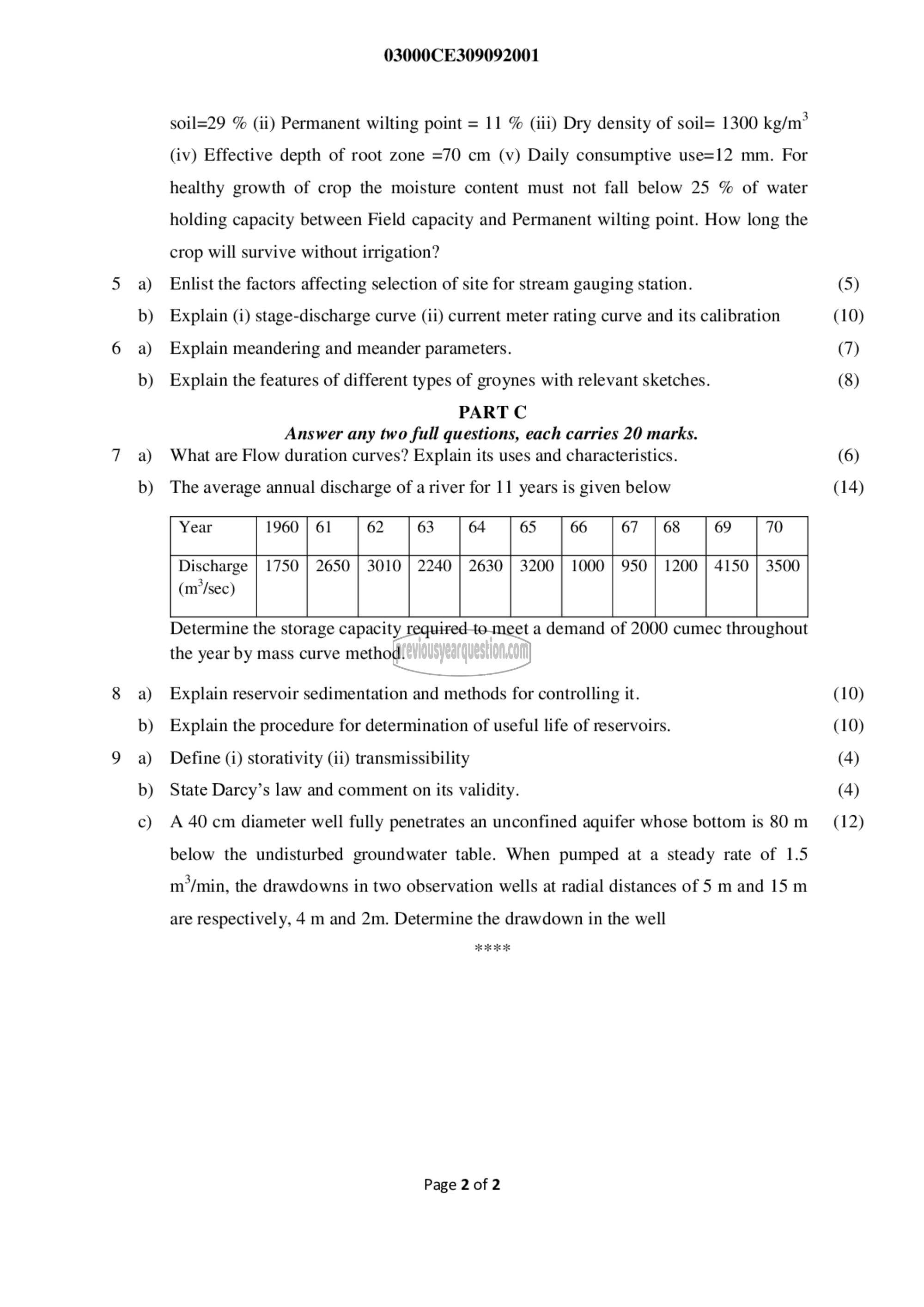APJ ABDUL KALAM TECHNOLOGICAL UNIVERSITY Previous Years Question Paper & Answer
Semester : SEMESTER 5
Subject : Water Resources Engineering
Year : 2020
Term : DECEMBER
Branch : CIVIL ENGINEERING
Scheme : 2015 Full Time
Course Code : CE 309
Page:2
a)
b)
a)
b)
a)
b)
a)
b)
a)
b)
0)
03000CE309092001
soil=29 % (ii) Permanent wilting point = 11 % (iii) Dry density of soil= 1300 kg/m*
(iv) Effective depth of root zone =70 cm (v) Daily consumptive use=12 mm. For
healthy growth of crop the moisture content must not fall below 25 % of water
holding capacity between Field capacity and Permanent wilting point. How long the
crop will survive without irrigation?
Enlist the factors affecting selection of site for stream gauging station.
Explain (i) stage-discharge curve (ii) current meter rating curve and its calibration
Explain meandering and meander parameters.
Explain the features of different types of groynes with relevant sketches.
PART C
Answer any two full questions, each carries 20 marks.
What are Flow duration curves? Explain its uses and characteristics.
The average annual discharge of a river for 11 years is given below
Discharge | 1750 | 2650 | 3010 | 2240 | 2630 | 32 950 | 12 4150 | 35
(m’/sec)
Determine the storage capacity required to meet a demand of 2000 cumec throughout
the year by mass curve method.
Explain reservoir sedimentation and methods for controlling it.
Explain the procedure for determination of useful life of reservoirs.
Define (i) storativity (ii) transmissibility
State Darcy’s law and comment on its validity.
A 40 cm diameter well fully penetrates an unconfined aquifer whose bottom is 80 m
below the undisturbed groundwater table. When pumped at a steady rate of 1.5
m°/min, the drawdowns in two observation wells at radial distances of 5 m and 15 m
are respectively, 4 m and 2m. Determine the drawdown in the well
Page 2 of 2
(5)
(10)
(7)
(8)
(6)
(14)
(10)
(10)
(4)
(4)
(12)
